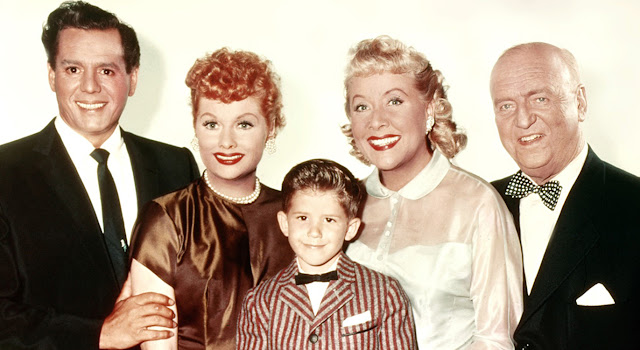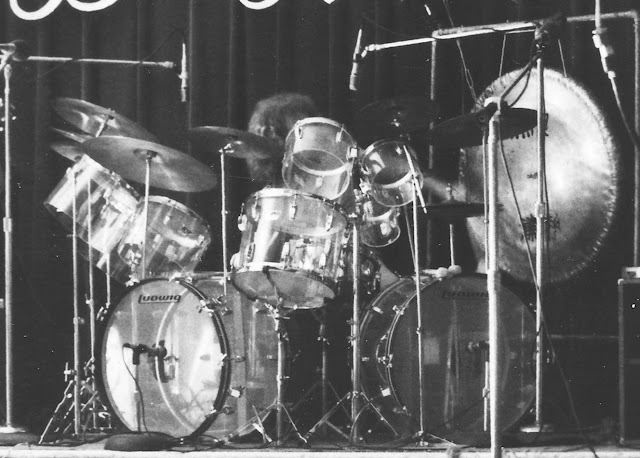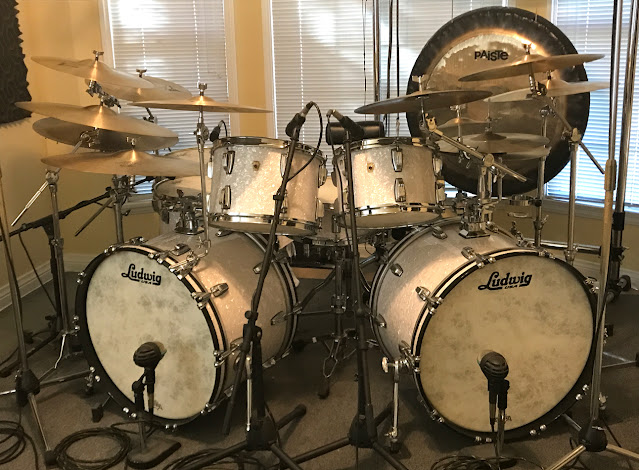Starting to Play
After Pop and Mom had listened to me bang on whatever I could get my hands on around the house and watched me play “air drums” for a couple of years, one day when I was around ten years old Pop brought me home a pair of drumsticks and a Ludwig model #354 gum-rubber practice pad (see catalog photo, above). The sticks were not even a matched pair — one was a Ludwig 2B model, the other was a Slingerland 5B model; they were quite different in weight, diameter, balance, and in shape near the tip — and they both had been well used by the time I took possession of them. As an adult I’ve often wondered where Pop got his hands on such a motley pair of sticks. (Maybe he won them in a poker game.) But when I was ten it didn’t matter — at last I had real drumsticks instead of wooden spoons and cutlery! And I worked out for hours on end with those sticks on that rubber pad, which I placed on an old wooden chair that had a stoutly-padded yellow vinyl seat cushion. With the practice pad as my snare drum that yellow cushion became my tom-toms, while the wooden back of the chair was a set of Zildjian cymbals (well, in my mind’s ear it was).
A little later on I replaced the rubber practice pad with a
Remo tunable practice pad, which had the twin advantages of 1) incorporating a
real drumhead with a foam disk underneath, so it felt much more like I was playing on a real drum (and so
better helped me develop my touch on the instrument), and 2) producing a loud
“pop” sound with each stroke, which made the thing way more satisfying to play than the rubber pad, which with each
stroke produced a muted “tuh” sound that was barely audible. I swapped out the
rubber pad for the Remo pad on my chair/drumset and kept right on playing. That
rig had to suffice for the next year or so until I had proven to my folks that
my obsession with drums wasn’t simply a passing fancy.
 |
The Slingerland Festival snare drum — a victim of my eyes being bigger than Pop's wallet |
Costing only $35.00 — including a stand — the red-sparkle
Pearl MIJ* that I did get was a perfectly adequate beginner’s instrument. After
eventually replacing the crappy factory drumheads with top-line Remo drumheads
it sounded and played decent enough. Not pro-level by any means (its sound was
unrefined and had too much ring), but it was good enough for me to get my hands
working, and to begin mastering the art of extracting different sounds out of a
single drum. I had begun taking drum lessons at a local music store (Adler
Music) and loved finally being able to put all this theory into practice on an
actual instrument that made actual music instead of practice pads and chair cushions that only made music in my head.
 |
Pearl MIJ snare drum in red-sparkle wrap finish (not my exact drum but similar). |
Around this time I discovered that the 6” circular brass lid of my father’s ceramic Amphora tobacco humidor had an indentation inside its handle that was a perfect fit for the angled top of my music stand (if I removed the stand’s music holder). So naturally I conscripted it and used it as a cymbal along with my new snare drum. (Although I’m sure Pop wasn’t too happy about this transgression, I don’t remember him ever reading me the riot act over it. Underneath all the Sturm und Drang, Pop was a real softie.) I also discovered that if I removed the foam disk from my tunable practice pad it sounded like a tom-tom, so I also added that to my rig.
So with my beginner-level red-sparkle snare drum, humidor-lid cymbal, and practice-pad tom-tom I had at last taken the first concrete steps on my way to becoming A Drummer.
*MIJ = “Made-In-Japan”, a drum collector’s umbrella term
covering myriad low-budget drum brands made in Asia during the 1960s rock music
boom, differentiating them from the better Japanese brands like Tama, Yamaha
and Pearl (different company than MIJ Pearl) that revolutionized the drum
industry when they began producing state-of-the-art professional-quality drums
and hardware in the early 1970s.
-Hyam R. Sosnow





Comments
Post a Comment